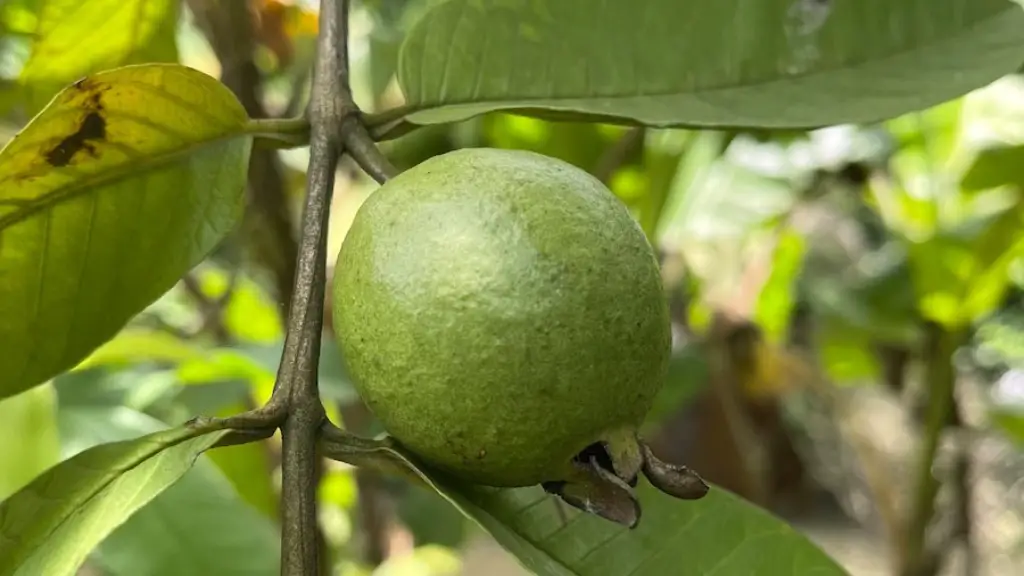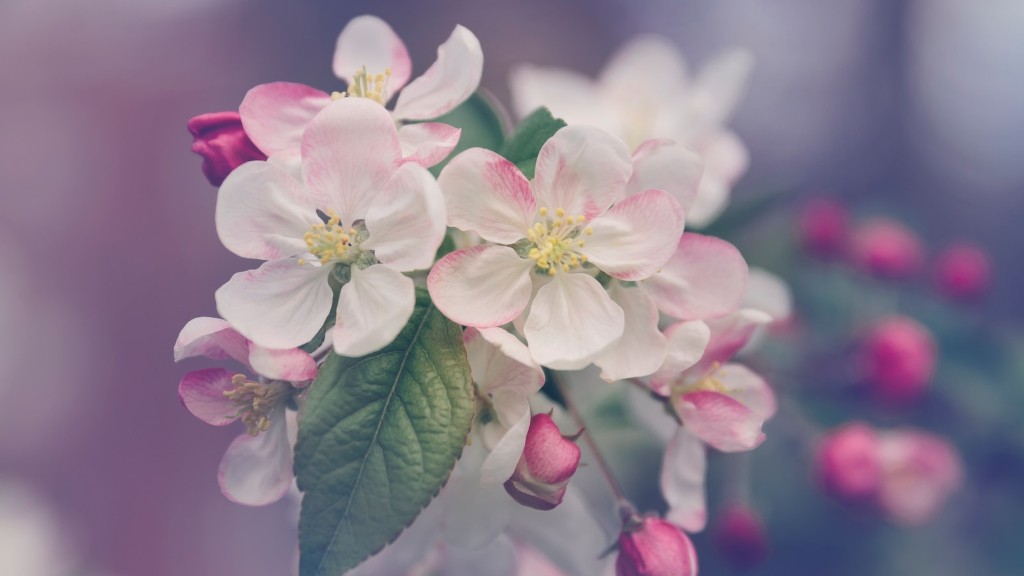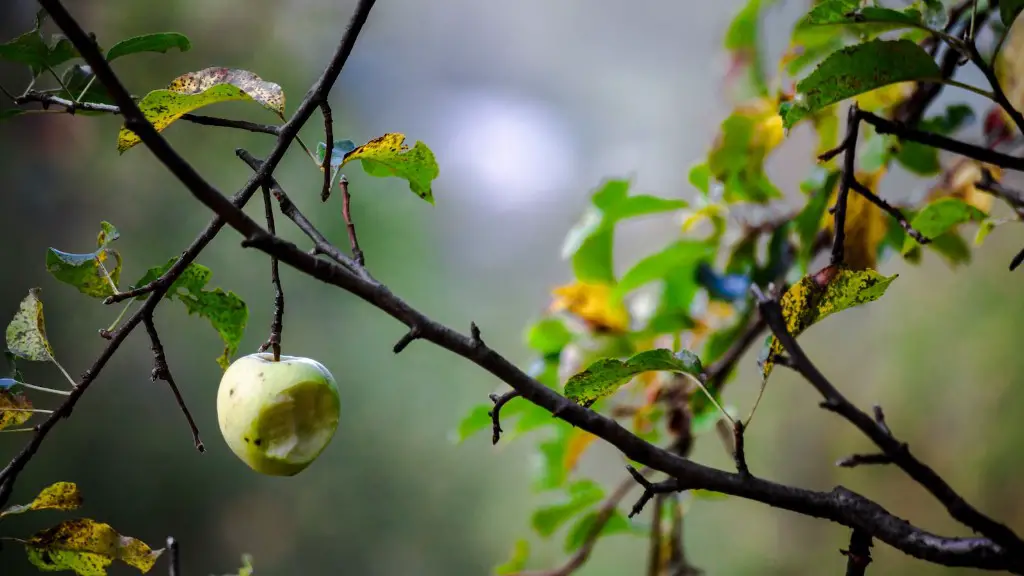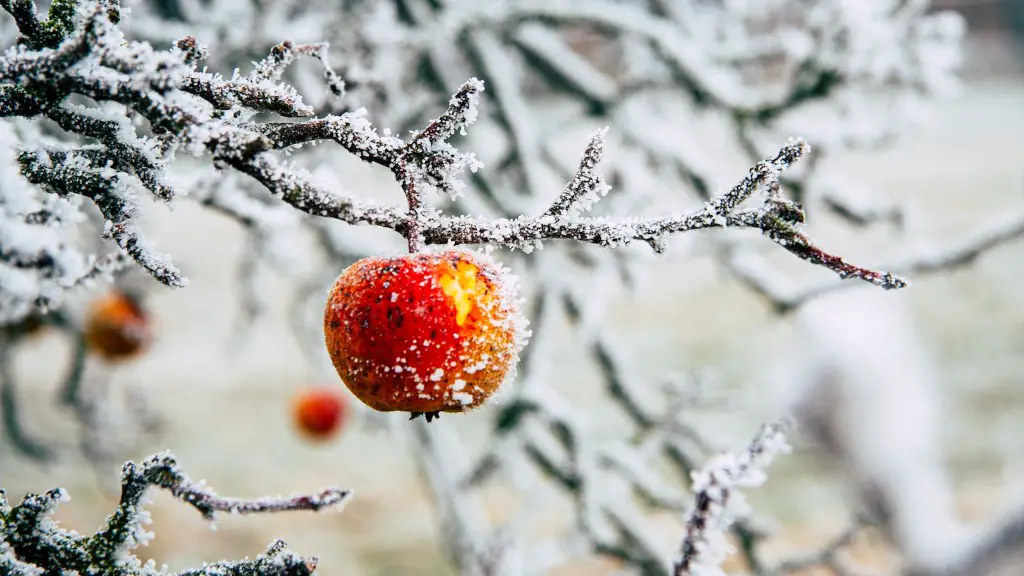Growing a lemon tree indoors is a great way to enjoy these nutrient-rich fruits all year round. With a few simple steps and carefully selected seed, you can get your own lemon tree to produce delicious citrus fruit. Here’s what y’all need to know about growing a lemon tree from seed.
To start your lemon tree from seed, you’ll need to purchase or gather a couple of fresh seeds from a healthy, ripe lemon. Select ones that are big, dark and plump and crack them open until you can see the seed inside. You’ll also need a small pot, potting soil and a warm place for the tree to grow.
Plant the lemon seed about a half inch deep in the soil. Lemon seeds need light to germinate so it’s best to plant them under a window or near a lamp. Make sure the soil is kept moist but be careful not to overwater. As the seed grows, you’ll need to regularly prune the tree to keep its growth healthy.
Once the seed has grown a few leaves and your seedling starts to resemble a tree, it’s time to move it out of the pot. Choose a larger container and fill it with fresh soil. Transfer the tree carefully, making sure not to damage the delicate roots. If you want the tree to stay healthy and produce good quality fruit, you’ll need to fertilize it regularly.
Your lemon tree will need plenty of sunlight to do well and produce quality fruits. Place the pot in a south facing window where it can get at least six hours of sunlight a day. Make sure to rotate the pot every two days to ensure that all sides of the tree are getting enough light.
Finally, you’ll need to be sure to give your lemon tree proper water and drainage. Lemons need more water than most other trees so be sure to water the pot until water drains from the bottom. If the soil gets too dry, the leaves will start to turn yellow and drop off. Too much water, on the other hand, can cause fungal diseases to set in.
These basic steps should have your lemon tree growing healthy and bearing fruit in a couple of months. With some extra care and attention, you’ll have a flourishing and delicious indoor lemon tree!
Lemon Tree Care
Once your lemon tree has been transplanted, it’s time to start caring for it. Proper care and maintenance will help ensure that your tree is healthy and produces the best results. There are a few key things to keep in mind when caring for your lemon tree.
To start, it’s important to provide the right amount of nutrients to the soil. An organic, nutrient-rich fertilizer is best, as lemon trees aren’t high-maintenance and don’t need too much feeding. Make sure to fertilize your tree every three months and avoid using chemical fertilizers, as they can damage the tree’s delicate roots.
When your lemon tree starts to produce fruit, make sure to check for pests, diseases and other signs of stress. If you notice anything unusual, prune the tree and treat it with an organic pest control solution. You should also take the time to regularly prune and shape the tree for better growth, and use a stick to support it if necessary.
Keeping the tree in a warm environment and avoiding cold drafts is also very important. Place the container away from any drafty windows or doors and don’t keep it near any hot appliances. And be careful not to overwater it, as too much water can cause root rot.
Finally, make sure to keep your lemon tree in a sunny location. At least six hours of direct sunlight a day is ideal, and rotate the pot every two days to ensure all sides of the tree get enough light. With the right combination of light, nutrients, and regular care, you’ll have a healthy, happy lemon tree in no time.
Harvesting Lemons
When your lemon tree starts to produce fruit, it’s time to start thinking about harvesting. The best way to tell when lemons are ready to be picked is to check their color. Lemons should have a deep yellow hue and feel slightly soft, but not too squishy. You can also give them a gentle tug and if they easily come away from the tree, they’re ready to be picked.
When harvesting lemons, use sharp gardening scissors or shears to cut the fruit from the tree. Gently twist the lemon to help break the stem, then use your scissors to carefully cut it away. Be sure to leave a bit of stem attached to the fruit, as this will help keep the lemon moist and prevent any rot.
If you’re not planning on using the lemons right away, you can hang them up in a sunny area to help them ripen before using them. Once they’re ripe, you can use them in baking and cooking, or even make your own lemonade. Lemons store well in a cool, dark places and can last for weeks.
When harvesting your own freshly grown lemons, you’ll never want to go back to store-bought lemons! With a bit of effort and care, you can enjoy delicious citrus fruits of your own all year round.
Pest Prevention
One of the keys to keeping your lemon tree healthy is preventing pests. The best way to do this is to regularly check your tree for any signs of infestation. Look for tiny insect larvae, webs, sap patches or wilted leaves, as these are sure signs of bug activity.
If you notice any of these signs, it’s best to act fast. Start by pruning the affected parts of the tree and discard any infested leaves and branches. You can then treat the tree with an organic pest control solution. This will help get rid of any existing pests and discourage them from coming back.
If you’re looking for preventative measures, you can opt for a homemade pest spray. Mix a tablespoon of liquid dish soap with a teaspoon of vegetable oil and a cup of water. Spray the solution on your lemon tree every two weeks, as this will create a barrier on the leaves and help to keep pests away.
Lemon trees are fairly hardy, but pests can still cause serious damage if left untreated. With regular pest checks, pruning and pest control treatments, your tree will be strong, healthy and resistant to any bugs.
Frost Protection
In colder climates, frost can be a major problem for lemon trees. Temperatures that drop below 32 degrees Fahrenheit can cause serious damage, so it’s important to take the necessary precautions to protect your lemon tree. Here are some tips on how to keep your tree safe from the frost.
To start, try to keep your tree in a sheltered area away from drafts. You can also build a simple frame around it or place it in a pot with insulated soil. Covering the tree with blankets or sheets can also help protect it from the cold. Just be sure to remove the covering during the day, as covering the tree can cause the temperature underneath to rise too high.
You can also place a few heating pads or lights in front of the tree. This will help to keep the air a few degrees warmer and will keep the frost from settling around the tree’s roots. Just be careful not to place the heating pads too close, as this can cause the soil to dry out.
For any particularly cold nights, it’s best to cover the tree with heavy tarps. This will help keep any moisture out and will help insulate the tree from the cold. Make sure to remove the tarps during the day, otherwise the tree can overheat.
With the right protection, you can keep your lemon tree safe from the frost and help it continue to flourish. Just be sure to take the necessary precautions and check the weather forecast before any cold nights.
Essential Tips for Growing Lemon Trees
Growing a lemon tree from seed is an easy but rewarding experience. With the right care and attention, your tree will produce delicious and nutrient-packed lemons in no time. Here are some essential tips to keep in mind when growing your own lemon tree.
Firstly, make sure to use fresh lemon seeds. Choose ones that are big, dark and plump, then crack them open until you can see the seed inside. Plant the seeds about half an inch deep in moist soil, then place them in a warm and sunny location.
Be sure to not overwater the tree and make sure the soil is well-drained. If the soil gets too wet, the roots can start to rot. Fertilize the tree regularly and prune it to keep its growth healthy. Pruning will also help shape the tree and encourage better growth and more fruit.
Keep your lemon tree in a warm location, away from drafty windows and doors. Place it near a south-facing window and make sure it gets at least six hours of direct sunlight a day. Rotate the pot every two days to ensure all sides of the tree get enough light.
Finally, check your tree for signs of pests, diseases or other stress. Prune any affected parts of the tree and treat it with an organic pest control solution. With regular maintenance and a bit of luck, you’ll be harvesting delicious lemons in no time!





